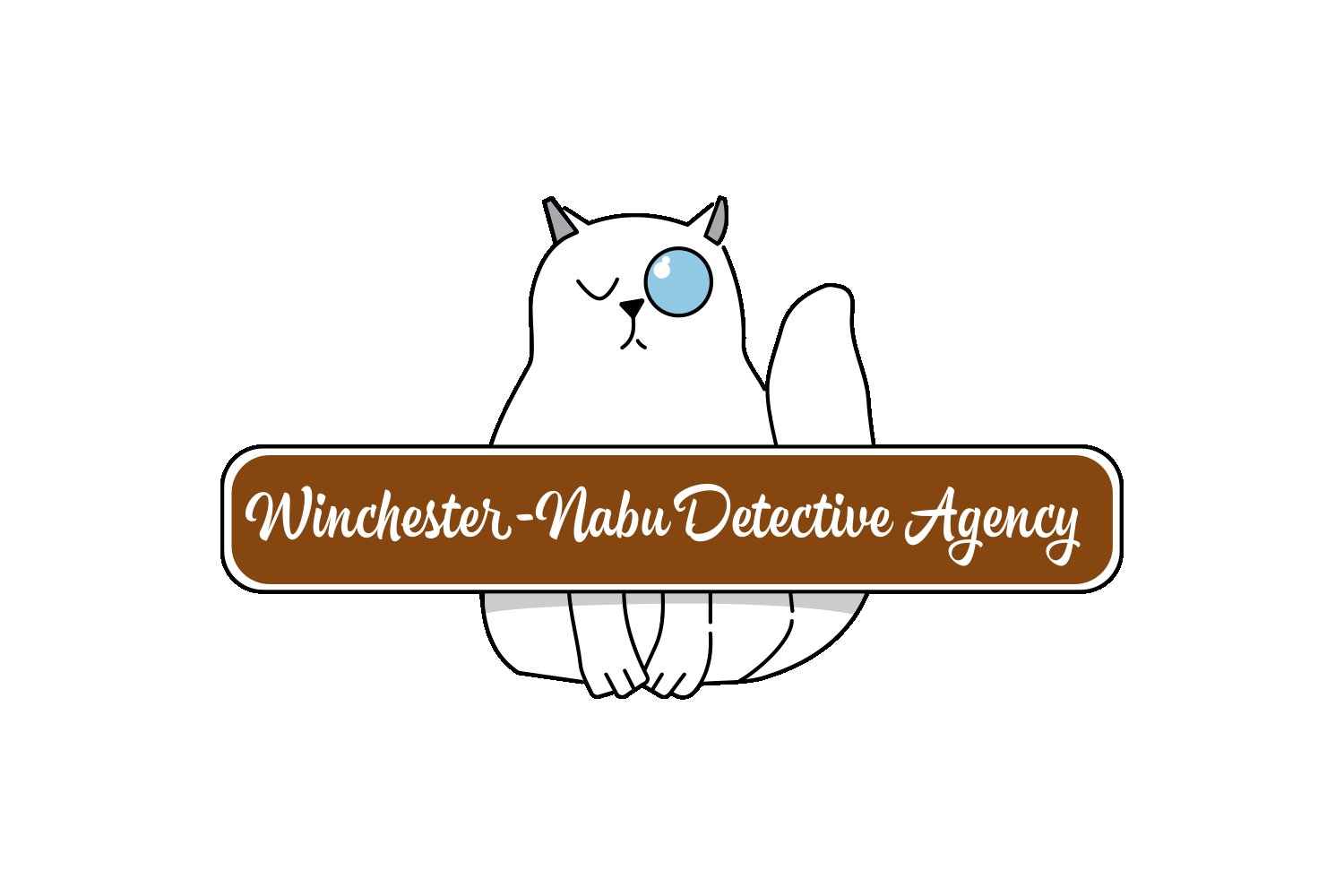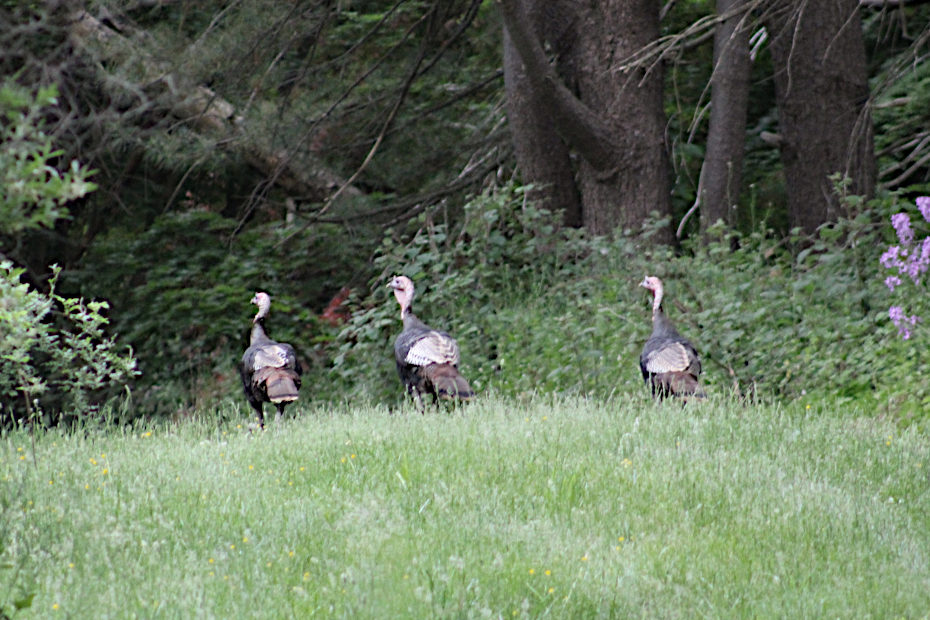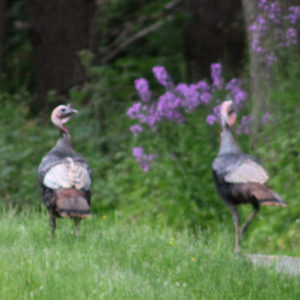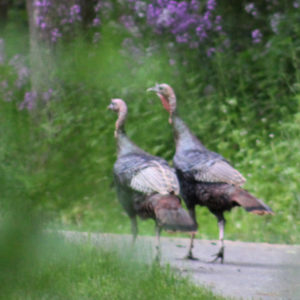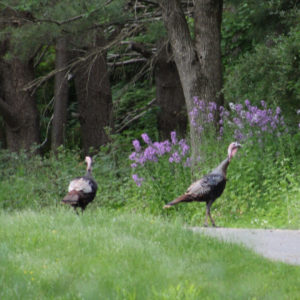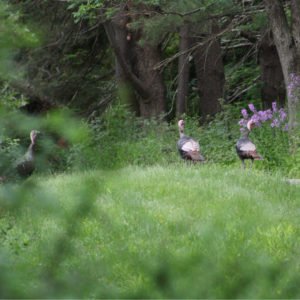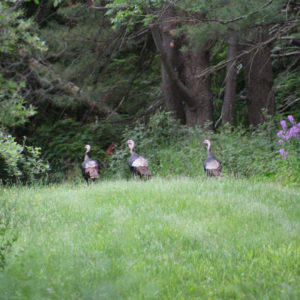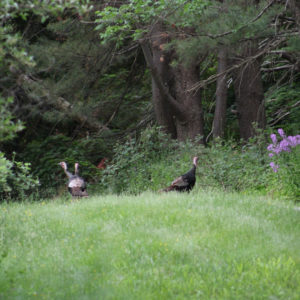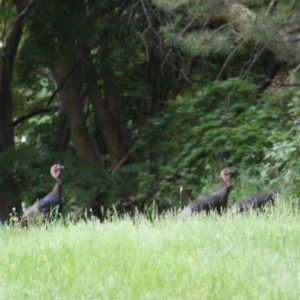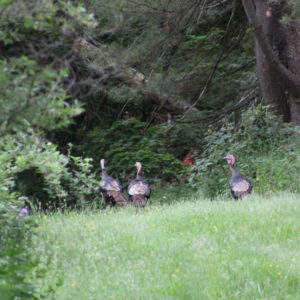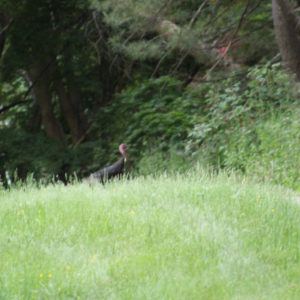AMBER LOVE 19-JULY-2021 This work is supported by the generous backers who adore my cat stories at Patreon.com/amberunmasked and they also get first access to what’s happening with my books and podcast.
Where We Left Off:
New genetic information and living subjects for the Jersey devil-deer population were analyzed.
Three Strangers:
This week’s case file has the air of autumn about it. I’ve spread the word about the cryptids known as Gobblesquatches for years. What we seem to have here is a phenomenon that isn’t a gobblesquatch, but does make the flock of giant birds more unusual than you may imagine. Turkeys, in general, get a bad rap. They’re considered so stupid that the urban legend about them says they can kill themselves accidentally by looking up at the rain and drowning. According to How Stuff Works, that’s simply a myth perpetuated by anti-turkey propagandists.
Turkeys aren’t as stupid as people think. And despite, WKRP in Cincinnati, some turkeys do fly. I know because one went right in front of my windshield one day and scared the shit out of me. It’s the genetically-bred turkeys with too much meat on their bodies that are incapable of flying.
That brings us to this most recent case of wild turkey sightings at the Winchester-Nabu Detective Agency. I scaled my way up to the observation deck with Oliver. He eagerly awaits his mornings of fresh air and critter watching. Gus tends to pop out and then make a game of going in and out the door. We could hear the turkeys before seeing them up the hill. It’s such a unique sound that I find amusing and end up smiling. When you’re surrounded by the cacophony of seemingly endless motors with bullshit MagnaFlow mufflers, the sounds of turkeys is funny. It can elevate my mood and remind me of the few joys of living here.
Oliver wanted to stay where he was. It takes me so long to get geared up on a normal patrol with Gus, that I decided to leave him at home. I went out in a house dress and slip-on shoes armed with a camera and zoom lens that I had only had for a short while. In other words, I’m not that great of a photographer with moving objects. I did my best to stay out of the way and capture the three turkeys I could see. I’m surprised if it was such a small family of them. The gaggles of them are usually more than that.
Sighting Notes:
My observations and the photos show that there was one turkey who tended to move away from the other two. It was entirely isolated. At first, it was accompanied by let’s call it bird #2. Then when bird #3 showed up, 2 & 3 hung out together and bird #1 drifted alone. Bird #1 carefully studied their surroundings. I’m sure all of them were aware of my presence, but since I wasn’t chasing them down, they kept a steady, but alert pace going up the hill.
I should backtrack and explain that they came from the woods on the south border, then walked up the privet drive, and at the crest of the hill, they turned north into the deep woods in the direction of the Murder Shed. They appeared to be polite to each other. They walked in a line without any displays of aggression. I was also interested in how shiny their feathers were. It’s easier to see in the black (or dark) lengths of the feathers. While their skin may look wrinkly and leathery, the feathers are sleek with a sheen that glowed in the sun. In all the times I’ve seen wild turkeys, I’ve never seen a male turkey display that fan of tail feathers they’re known for and shown in every type of imagery for turkeys. Maybe I’m missing out on something special.
Oliver wanted to ascertain where these birds were heading and why. Since the state shut down the quaint pheasant farm out a few miles from here, local game birds don’t have any organized breeding or release program that we know about. It was a real shame when they shut down that farm. Yet, according to the state’s website, the turkey management program is one of the most successful in state history. It’s true the big birds had disappeared from New Jersey for years due to habitation loss and game hunting. In the late 1970’s the birds were reintroduced. Supposedly the annual hunting can sustain the killing of 3,000 birds a year on average.
They eat a variety of plants, nuts, fruits, and insects. Their diet changes with the seasons and what’s available obviously. The Grumpy Old Man informed the rest of the staff that there’s a mulberry tree on the front border. Across the street is a cherry tree. He watched the white-tailed deer eating from them. I guess if the fruits fall to the ground, turkeys would eat them too.
We took a gander at the tax map and if the birds stayed in a reasonably direct line, they were aiming for the largest part of the woods since the owners of the next plot over use the grounds for hunting and not development. Their taxes are only $110/year. It’s a qualified farm like our neighbor’s plot.
I kept toggling through the photos and couldn’t make any sex determinations because all three of them looked the same. According to Oliver’s research, there’s a good explanation for that. The wild turkeys have same sex flocks! Flock numbers can range from 5 to 50 and live in a thousand acres as long as the land is diverse with meadows, fields, woods, and water supply. So it seems that my speculation about all three of these birds being “gobblers” (male turkeys) was plausible.
Oliver also informed me that the reason the birds tilt their heads so much is because of their monocular vision. With eyes spread far apart, they need to focus one eye at a time. This happens to give them excellent vision, but from our perspective, makes turkeys look like they are confused all the time.
Bewitched turkeys have even more to take into consideration. Have you gotten your hands on Chuck Wendig’s The Book of Accidents? Animals moving in circles uncontrollably? Weird stuff. Turkey experts write about the rituals of turkeys in terms of dominance, mating, or warding off predators. They don’t seem to ever discuss the behaviors of bewitched turkeys.
The three gobblers could have been following the call the their phasiamancer (one who can control turkeys) like a pied piper. Would you consider turkeys to be good familiars? They can travel across neighboring lands where they’re prevalent and no one would be suspicious. They don’t even have to be quiet. Since they aren’t seen as an everyday bird sighting like a blue jay or robin, humans leave their houses to get a better look. That leaves the humans exposed to have their conversations in the presence of birds they don’t find threatening. Those birds can then take their intel or gossip back to their master. Low tech, but quite effective for spying on neighbors.
Case Findings:
When Oliver mapped out the known direction of the flock’s travels and then predicting which ways they could be going, he felt that a phasiamancer was nearby. The turkeys were being called for a ritual at the top of the hill near the Murder Shed.
Case Status: Closed
